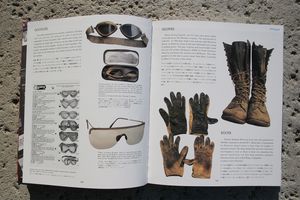Steve McQueen 40 Summers Ago...
Hollywood Behind the Iron Curtain-Review
It's easy to get lost. That's what I found myself thinking after reading Steve McQueen 40 Summers Ago... Hollywood Behind the Iron Curtain-by Rin Tanaka and Sean Kelly. It's easy to get lost in the visual retelling of history. Especially when that history combines one of cinema's greatest icons that had a passion just as deep for his life outside of his work as he did for his work. Rin Tanaka and Sean Kelly collaborated on 40 Summers Ago... to chronicle Steve McQueen's participation in the 1964 ISDT held in East Germany.
The book is 192 pages of mostly black and white photos with a short section of color photos. What little text is contained within the pages is there mostly as an explanation to some important historical points and descriptor of items that the team or riders of the time may have used as riding gear. This isn't to say what writing is in there is merely cursory. But with such beautiful photos there to do all the talking anymore text might detract from the book. Interestingly, with a Japanese co-author, Japanese mimics every bit of English text. A good indication that McQueen's fame in the motoring world went well beyond U.S.
The color pics were restored and digitally transferred from film that was part of a lost archive taken by Lynn Wineland, as co-author Sean Kelly writes. With photos that consume an entire page at a time you'll find yourself wanting to carefully remove them from the binding and give them a proper place in a frame. The photos that were transferred from celluloid are part of a 16mm film that was originally commissioned by Johnson Motors of Pasadena, California to be used as publicity. At the time Johnson Motors was the West Coast distributor of Triumphs. But since the American team didn't do as well as hoped in the '64 ISDT, the film was shelved for over forty years. Not until Mr. Kelly came into contact with Mr. Wineland while conducting a rabid search for Steve McQueen's original bike used in the race, was the footage and other never-before-seen photos discovered. This is some of the history that makes it easy to get lost.
"Steve had brought his good friend and motorcycle racing mentor, Bud Ekins, to double for him during a chase scene. Climaxing in a stunt that would catapult the actor to superstardom and bind these two men together on celluloid for eternity. Their immortal jump for freedom on a Triumph TR6 that their friend 'the father of pin stripping', Von Dutch(1929-1992) had converted to appear of German manufacture."
What the book describes, if you haven't already figured it out, is the famous jump on a motorcycle in "The Great Escape." It was actually Bud Ekins that completed the jump over the barbed wire fence.
Bud's brother Dave Ekins and their friend and teammate, Cliff Coleman are also covered in detail. What one comes to learn is that the book is just as much a telling of the history of the first American team to compete in the ISDT as it is about Steve McQueen's individual history with the race.
--- Steve McQueen 40 Summers Ago... Hollywood Behind the Iron Curtain-editorial by Rin Tanaka and Sean Kelly. Hardbound, 192 pages, Cycleman Books and Johnson Motors, Inc. 2004; $49.95
More by Pete Brissette































Comments
Join the conversation